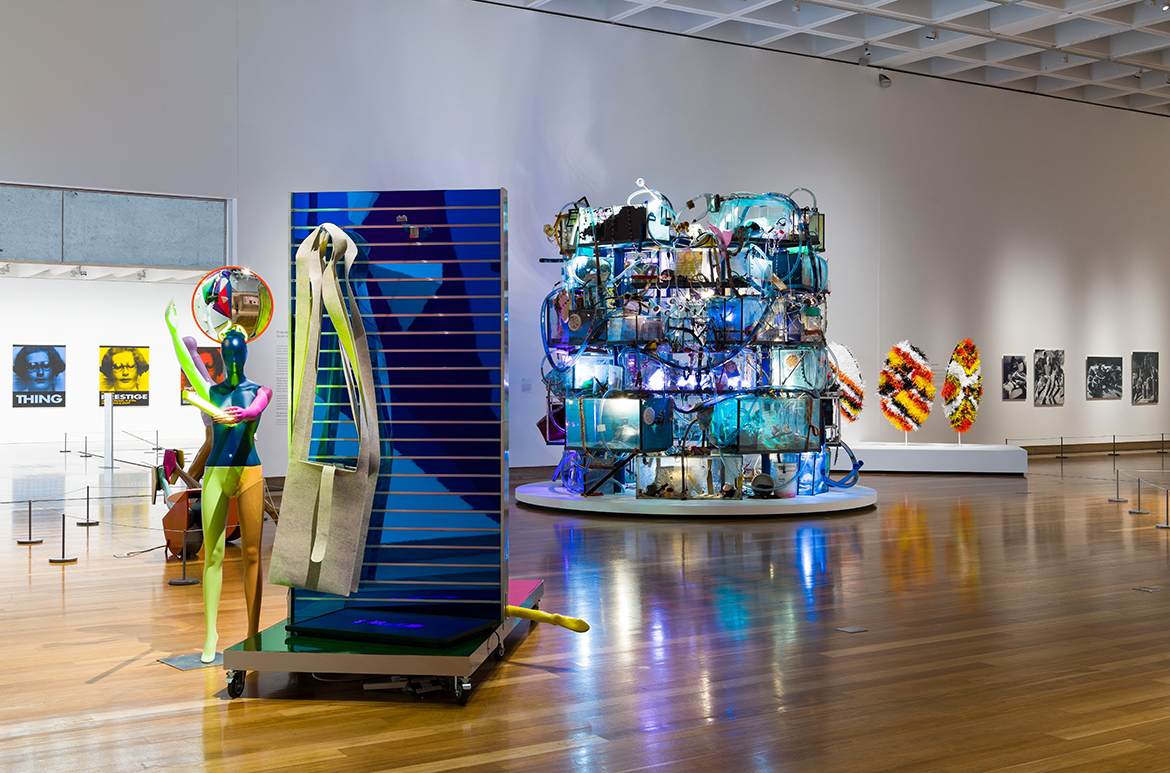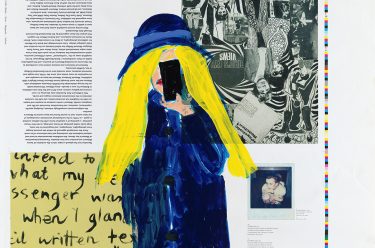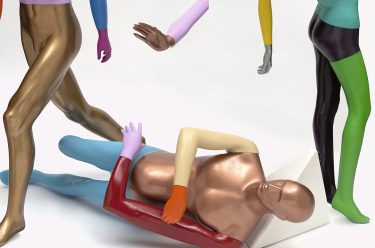The exhibition ‘Embodied Knowledge’ may have closed, however you can still delve into our video archive of Queensland contemporary art and artists from the far north, the Gulf of Carpentaria and Torres Strait Islands to Moreton Bay and surrounding Brisbane.
‘Embodied Knowledge: Queensland Contemporary Art’ journeys through the state’s vast artistic landscape, discovering works of art that make visible something of our identity, heritage and history as Queenslanders.
Heather Marie (Wunjarra) Koowootha
Wik-Mungkan and Yidinji/Djabugay peoples / Born 1966, Yarrabah / Lives and works in Cairns.
When Heather Marie (Wunjarra) Koowootha viewed the portraits of Australia’s former prime ministers hanging in the halls of Parliament House, Canberra, she was struck by the lack of First Nations leaders. In response, the artist was compelled to create something that would teach her grandchildren about leaders who have shaped their own Indigenous family, whose connections stretch from Innisfail in far north Queensland to the Torres Strait.
Callum McGrath
Born 1995, Brisbane / Lives and works in Melbourne, Victoria
Callum McGrath’s images of people convening at birthdays or holidaying together have been replaced by pictures of queer memorials and spaces of celebration. The artist deliberately deploys the format of the family photo album to draw attention to the way that kinship in queer communities can be constructed by actively nurturing one’s ‘family of choice’ rather than those tied to you by biological reproduction. McGrath’s use of amateur photography acknowledges that uncovering the past is often an intuitive process that necessitates reading between the lines of archives or searching within unofficial sources. By inserting these monuments within the vernacular format of the family album, he seeks to emphasise how queer stories are too often left out of official history books.
Ethel Murray
Girramay/Jirrbal peoples / Born 1964, Tully / Lives and works in Cardwell
Ethel Murray creates her oversized contemporary bigin by knotting brightly coloured rope to a metal shield structure. Her use of fibre disrupts the clean, symmetrical graphic lines of the original totemic symbology. Coincidentally, the old shield design drawings by her father, which inspired this series of sculptures, were originally rendered on gridded graph paper — a method that has allowed Murray to upscale and translate the line work into this new medium.
Obery Sambo
Meriams of Mer / Born 1970, Thursday Island / Lives and works in Townsville
Obery Sambo comes from a long line of master mask- and headdress‑makers from Mer (Murray Island), home to the Meriam people of the eastern Torres Strait. One of the most well-recognised symbols of the region is the magnificent feathered dhari headdress (featured on the Torres Strait flag). In addition to producing these customary dhari, Sambo creates experimental interpretations of masks and headwear that are often activated through dance by the Meuram Murray Island Dance Group.
Vanghoua Anthony Vue
Hmong people / Born 1989, Sydney, New South Wales / Lives and works in Brisbane and Cairns.
Vanghoua Anthony Vue’s geometric mural and ornate headdress sculptures greet viewers with a cacophony of colour and texture. In the ‘Tape-affiti’ series, the tape’s practical uses in ducting and electrical jobs, or to signal safety issues, are up-ended for purely aesthetic means. The series is inspired by the artist’s heritage, especially Hmong textiles, stitched by women, whose intricate patterns serve ritual purposes and as political identification and are said to originate in a lost written language. The headdresses from Vue’s ‘Hard-hat Devi(l)-(n)ation’ series similarly nod towards the opulent custom of Hmong headdresses. Screwdrivers, paint rollers and plastic pipes are only some of the objects elaborately interwoven atop hardhats in these colourful sculptures. Tools are adorned with sequins, plastic jewels, pompoms, electrical tape, plastic cable ties, washers and bolts.
Moilang (Rosie) Ware
Torres Strait Islander awman (woman) / Born 1959, Thursday Island / Lives and works between St Pauls (Wug village), Moa Island, and Thursday Island.
Artists of Zenadth Kes (Torres Strait) are known to be masters of carving, weaving and printmaking. Using a novel approach, Moilang (Rosie) Ware has defined her practice by handprinting linocut textiles that combine several tiled designs, displayed like long scripts hanging from the wall. These artworks chronicle her culture and social history, repeating stories again and again, etching the narratives into collective memory in a similar way to oral storytelling — passing them on to future generations.
Warraba Weatherall
Kamilaroi people / Born 1987, Toowoomba / Lives and works in Brisbane
Warraba Weatherall investigates museological collections that hold Indigenous human remains and cultural materials from the artist’s Country and surrounds. It records ten objects held in national collections, including a grindstone, modified tree, pigment, stone axe, club, boomerang, shield, and skulls and bone fragments belonging to three ancestors. Weatherall has chosen to cast the original museum records of these objects as individual bronze memorial.
The removal of Indigenous Australian objects and human remains was a well-known occurrence throughout the nineteenth and twentieth centuries. The breadth of the collection of Indigenous cultural property, as well as advocacy for their timely repatriation to communities across the country, has been an area of debate and research for many decades. Weatherall’s work critiques the integrity of collecting institutions that seek to ‘protect’ cultural objects by keeping them in secure environments. Institutional acts of ‘safekeeping’ separate these objects from descendants and their intended uses.
Justene Williams
Born 1970, Sydney, New South Wales / Lives and works in Brisbane
Justene Williams humorously comments on the desire to ‘climb the ladder’ of the social and economic order. While shop mannequins once served as a material translation of the ideal body, Williams stretches and distorts their limbs so extensively that they almost lose their relationship to the human figure. The artist is not seeking to create an absurd artwork; rather, she draws our attention to the ridiculousness of contemporary capitalism — in this instance, the images created by the fashion industry for voracious consumption.
‘Embodied Knowledge: Queensland Contemporary Art’ / Queensland Art Gallery, Gallery 4, Gallery 5 (Henry and Amanda Bartlett Gallery) and the Watermall / 13 August 2022 to 22 January 2023
Featured image: Installation view of ‘Embodied Knowledge: Queensland Contemporary Art’, Queensland Art Gallery, 2022
#QAGOMA


